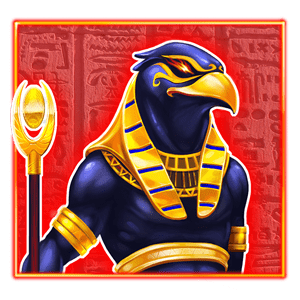



Take a journey through time and uncover the ancient legends of Egypt's Pharaonic civilization with Gambino Slots. This social casino offers a unique opportunity to experience the rich history and culture of one of the world's most fascinating civilizations.
With free spins and exciting gameplay, you can explore the mysteries of the pyramids and the secrets of the pharaohs. From the great Sphinx to the Valley of the Kings, every spin is a chance to discover something new and exciting. Join us as we delve into the world of Gambino Slots and explore the wonders of ancient Egypt through modern free slots. Get ready to be transported back in time and experience the magic of the Pharaonic civilization like never before.

Egyptian civilization is one of the oldest and most fascinating civilizations in the world. The Pharaonic period, which lasted from around 3150 BC to 30 BC, was marked by the rule of pharaohs who were considered to be divine rulers. The pharaohs built great temples, pyramids, and tombs, and their legacy has lasted for thousands of years. The ancient Egyptians believed in a complex system of gods and goddesses, and their religion played a central role in their daily lives. They also developed a system of writing known as hieroglyphics, which was used to record everything from religious texts to daily activities. Egyptian civilization was also known for its advanced mathematics, medicine, and astronomy. The Egyptians were skilled engineers and architects, and their building techniques were so advanced that many of their structures, such as the pyramids of Giza, still stand today. Egyptian civilization began to decline after the pharaonic period, but its legacy has lived on through the centuries. Today, we can still marvel at the great works of the Egyptian civilization and appreciate their contributions to the world.
The Great Pyramids of Giza are perhaps the most iconic symbol of ancient Egypt. These massive structures were built over 4,500 years ago and are considered to be one of the Seven Wonders of the World. The pyramids were built as tombs for the pharaohs and their consorts, and they were filled with treasures and offerings to ensure the pharaoh's journey into the afterlife. The construction of the pyramids was a massive undertaking, requiring thousands of workers and years of planning and preparation. The largest of the pyramids, known as the Great Pyramid, was built for the pharaoh Khufu and stands over 140 meters tall. It is estimated that over two million stone blocks were used in its construction, each weighing between 2 and 80 tons. Despite their massive size and age, the pyramids are still shrouded in mystery. How were they built? What secrets do they hold? These questions continue to fascinate people around the world, and the pyramids remain one of the greatest architectural achievements of all time.
The Sphinx is a mythical creature that has captured the imaginations of people for thousands of years. This massive statue, located near the pyramids of Giza, depicts a creature with the body of a lion and the head of a human. It is believed to have been built during the reign of the pharaoh Khafre, who ruled from 2558 to 2532 BC. The Sphinx was built to guard the pyramids and the pharaoh's tomb. It was believed to have magical powers and was revered as a symbol of divine protection. The Sphinx is also associated with the sun god Ra, who was believed to rise and set near the statue. Despite its age, the Sphinx remains one of the most impressive and enigmatic structures in the world. Its purpose and meaning continue to be debated by scholars and historians, and its mystery continues to fascinate people to this day.
The Valley of the Kings is a vast complex of tombs and burial chambers located on the west bank of the Nile River. It was used as a burial site for pharaohs and their consorts during the New Kingdom period, which lasted from around 1550 to 1070 BC. The tombs in the Valley of the Kings are some of the most elaborate and well-preserved tombs in the world. They are decorated with intricate carvings and paintings that depict scenes from the pharaoh's life and journey into the afterlife. The most famous tomb in the Valley of the Kings is that of Tutankhamun, the boy pharaoh who ruled Egypt from 1332 to 1323 BC. His tomb was discovered by archaeologist Howard Carter in 1922 and contained a wealth of treasures and artifacts, including the famous golden mask that is now one of the most recognizable symbols of ancient Egypt. Today, the Valley of the Kings is a popular tourist destination and a testament to the incredible skill and creativity of the ancient Egyptians.
The temples of Luxor and Karnak are two of the most impressive and awe-inspiring architectural wonders of ancient Egypt. These massive structures were built over thousands of years and served as important religious and political centers during the Pharaonic period. The temple of Luxor was built around 1400 BC and is dedicated to the god Amun. It is renowned for its massive columns and intricate carvings, which depict scenes from Egyptian mythology and history. The temple of Karnak, located just north of Luxor, is even more impressive. It is the largest religious structure ever built and covers an area of over 100 hectares. The temple was built over several centuries and contains a vast array of halls, chapels, and sanctuaries. The temples of Luxor and Karnak are a testament to the incredible skill and creativity of the ancient Egyptians. They continue to inspire wonder and awe in visitors from around the world, and remain some of the most impressive and enduring symbols of the Pharaonic civilization.
The ancient Egyptians believed in an afterlife, and they took great care to ensure that their bodies were preserved and prepared for the journey to the next world. This process, known as mummification, involved removing the internal organs and treating the body with various chemicals. Mummies have been found all over Egypt, from the pharaohs in their elaborate tombs to ordinary people buried in simple graves. Each mummy tells a unique story about the person's life and journey into the afterlife. One of the most famous mummies is that of Ramses II, who ruled Egypt from 1279 to 1213 BC. His mummy was discovered in 1881 and is now housed in the Egyptian Museum in Cairo. The mummies of ancient Egypt are a fascinating glimpse into the beliefs and practices of this ancient civilization. They continue to inspire wonder and curiosity in people around the world, and remain one of the most enduring legacies of the Pharaonic period.
The ancient Egyptians developed a system of writing known as hieroglyphics, which used pictures and symbols to represent words and ideas. Hieroglyphics were used for everything from religious texts to daily activities, and their meaning has been deciphered by scholars over the centuries. Hieroglyphics are one of the most enduring legacies of the Pharaonic civilization. They continue to fascinate people around the world, and their beauty and complexity have inspired artists and writers for centuries. Today, hieroglyphics are still used in some forms of art and design, and their influence can be seen in everything from tattoos to fashion.
The legacy of the Pharaonic civilization can be seen in many aspects of modern society. From architecture to art to religion, the influence of ancient Egypt can be seen all around us. The pyramids, the Sphinx, and the temples of Luxor and Karnak continue to inspire wonder and awe in people around the world. The mummies of ancient Egypt continue to fascinate and intrigue us, and the hieroglyphics continue to inspire artists and writers. The influence of ancient Egypt can also be seen in modern religion. Many of the beliefs and practices of ancient Egyptian religion have been absorbed into modern Christianity and Islam, and the gods and goddesses of ancient Egypt continue to be revered and worshiped by people around the world. The legacy of the Pharaonic civilization is a testament to the incredible skill and creativity of the ancient Egyptians. It continues to inspire and influence us today, and will continue to do so for generations to come.
The Pharaonic civilization of ancient Egypt is one of the most fascinating and enduring civilizations in the world. From the great pyramids of Giza to the temples of Luxor and Karnak, the legacy of the ancient Egyptians can still be seen and felt today. Through the magic of Gambino Slots, you can take a journey through time and experience the wonders of ancient Egypt for yourself. With free spins and exciting gameplay, you can explore the mysteries of the pyramids and the secrets of the pharaohs. So what are you waiting for? Join us on a journey through time and uncover the ancient legends of Egypt's Pharaonic civilization. Get ready to be transported back in time and experience the magic of one of the world's greatest civilizations like never before.